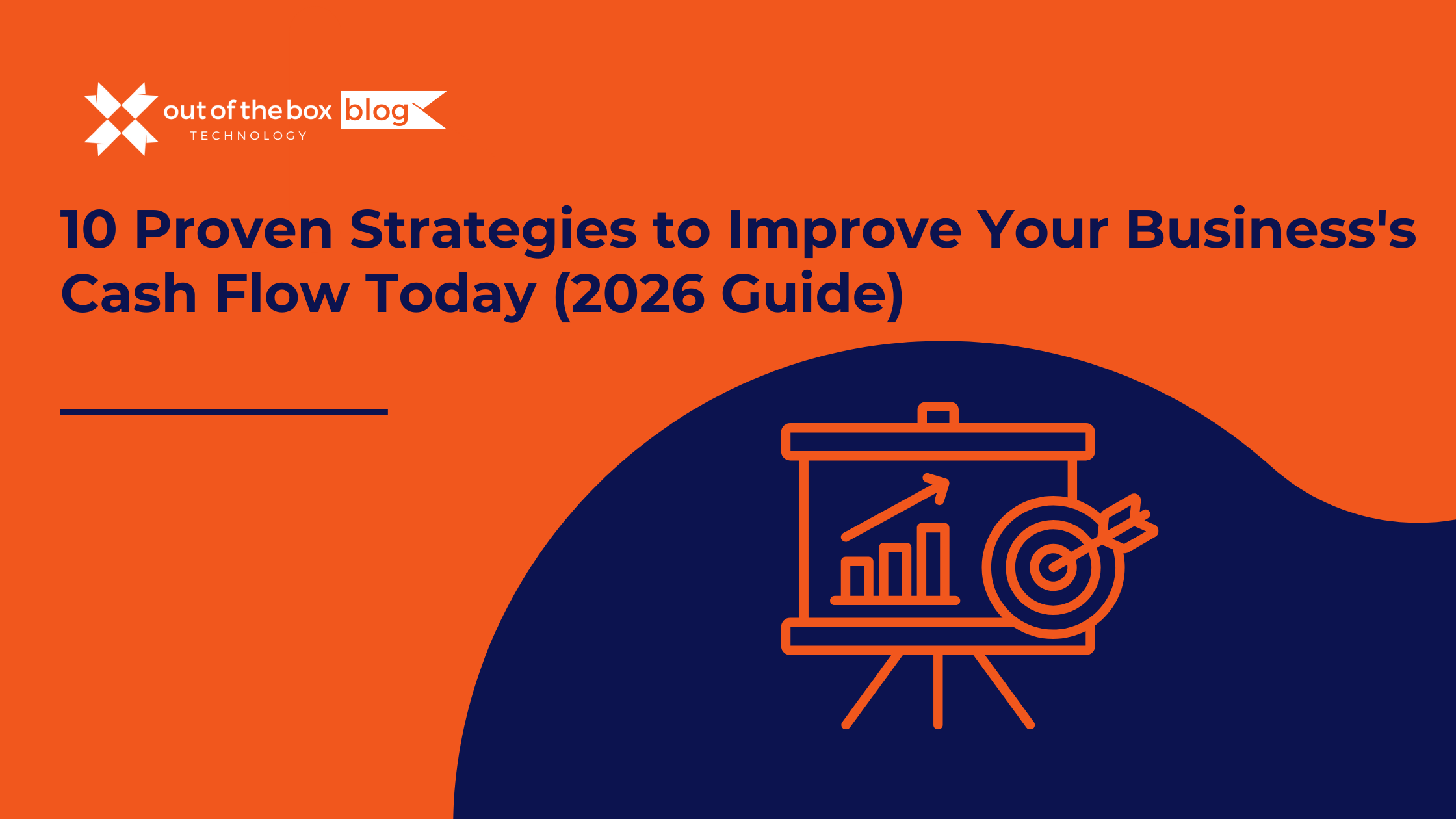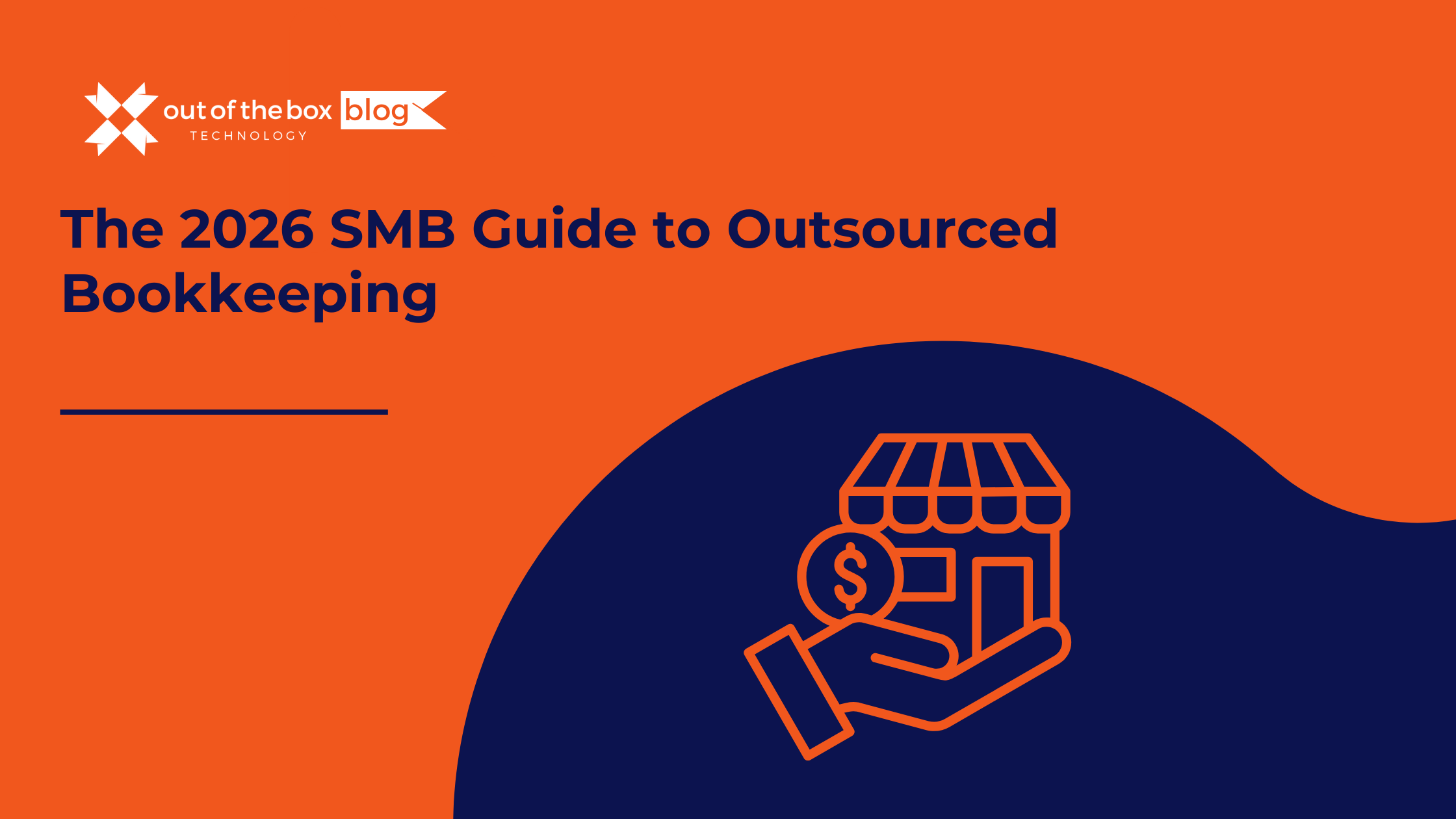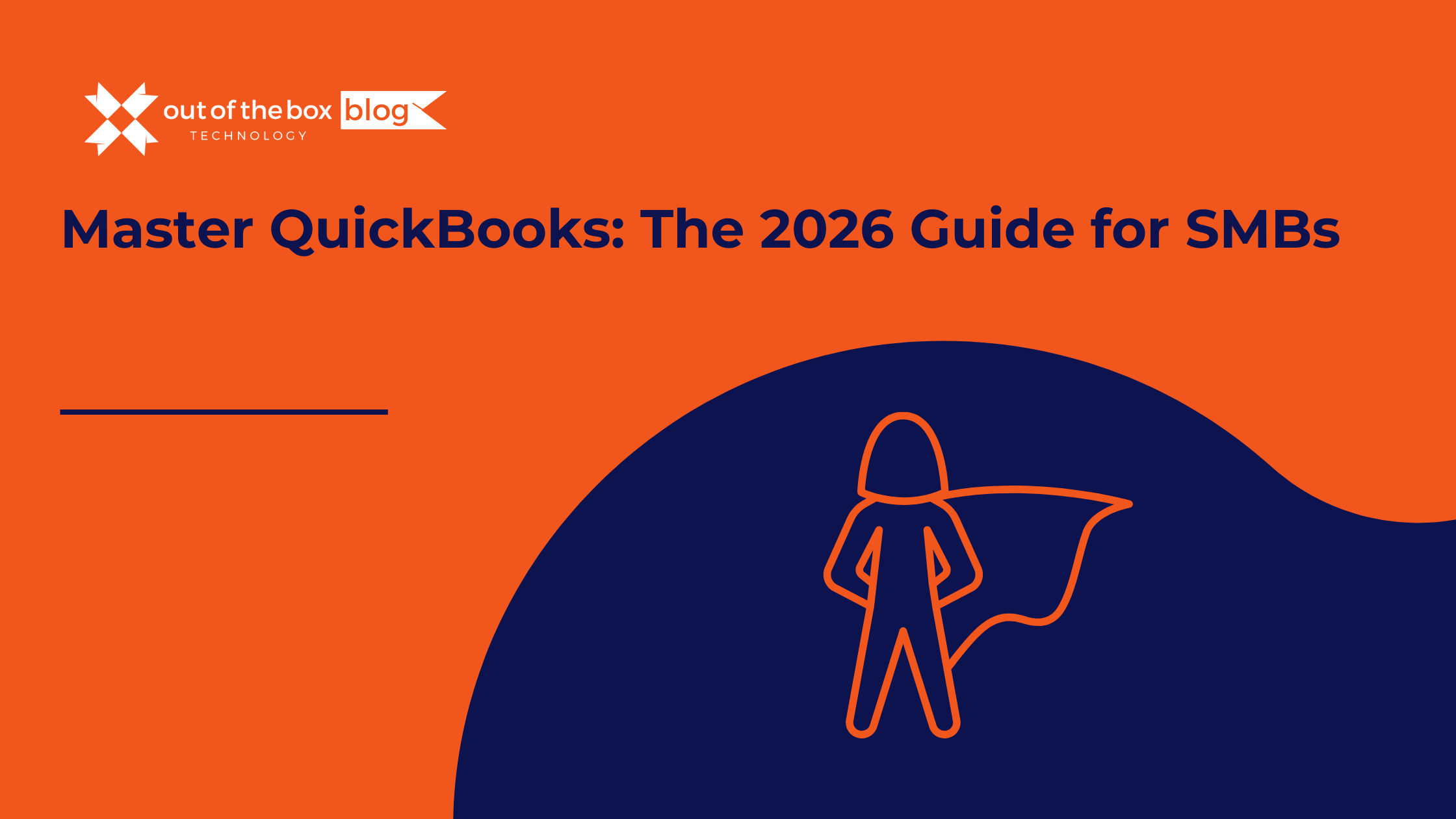It’s an old business adage, but it has never been more relevant than it is right now. You can have a P&L that shows a healthy profit. You can have a sales pipeline that is bursting at the seams. You can have a team that is busier than ever.
And you can still struggle to make payroll on Friday.
This is the Cash Flow Paradox. It is the single most confusing and stressful reality for small and mid-sized business (SMB) owners. In fact, a landmark study by U.S. Bank found that 82% of business failures are due to poor cash flow management.
It’s not that the business idea was bad. It’s not that the customers didn’t want the product. It’s that the money went out faster than it came in.
At Out of the Box Technology, we see this every day. We look under the hood of thousands of QuickBooks files, and we see the same story: great businesses being strangled by poor cash flow habits.
The good news? Cash flow is a solvable physics problem. It’s about velocity. If you can speed up the inflows and strategically slow down the outflows, you can transform your bank balance without selling a single extra unit.
Here are 10 proven strategies to improve your business’s cash flow starting today, complete with the QuickBooks workflows to make them happen.
Part 1: Accelerating the Inflows (Get Paid Faster)
The first lever you have is velocity. How fast does a dollar move from your client’s bank account to yours? Reducing this time by even 5 days can unlock thousands of dollars in working capital.
1. Invoice Immediately (The “Parking Lot” Rule)
Many service businesses wait until the end of the month—or worse, the end of the project—to invoice. This is a voluntary loan you are giving your client.
The Strategy: Implement “Trigger-Based Invoicing.” Send the invoice the moment the value is delivered.
-
For Service Pros: If the truck leaves the driveway at 2:00 PM, the invoice should be in the client’s inbox by 2:05 PM.
-
For Consultants: Do not wait for the 30th. Invoice upon milestone completion.
QuickBooks Pro-Tip: Use the QuickBooks Online mobile app. Your field techs can create and send invoices from the job site. This reduces administrative lag time (which often adds 3-5 days to the cycle) to zero.
2. Digital Payments Are Non-Negotiable
If you are still asking clients to “mail a check,” you are actively hurting your cash flow.
-
The Data: According to Xero, businesses that accept digital payments get paid up to twice as fast as those that rely on traditional checks.
-
The Strategy: Enable “Pay Now” buttons on your electronic invoices. Allow Credit Cards and ACH bank transfers.
-
The Objection: “But I don’t want to pay the 3% processing fee!”
-
The Reality Check: Calculate the cost of waiting 20 days for a check. Calculate the cost of chasing that check. Calculate the cost of using a Line of Credit because that cash isn’t there. The 3% fee is often cheaper than the cost of capital and the administrative burden of collections.
3. Incentivize Velocity (2/10 Net 30)
Sometimes, your clients just need a nudge. The “2/10 Net 30” term is a classic for a reason.
-
The Strategy: Offer a 2% discount if the invoice is paid within 10 days; otherwise, the full amount is due in 30 days.
-
Why It Works: Corporate accounting departments are trained to take discounts. It moves your invoice to the top of their pile.
-
The Math: Giving up 2% margin to get cash 20 days early is an annualized return of roughly 36%. Unless your profit margins are razor-thin, this is a smart trade for liquidity.
4. Require “Skin in the Game” (Deposits)
Stop funding your clients’ projects. If you have to buy materials or commit labor to a job, you should never be out of pocket.
-
The Strategy: Require a 50% deposit upfront for projects, or 100% upfront for hardware/materials costs.
-
The Script: “To schedule your installation and lock in current material pricing, we require a 50% deposit.”
-
QuickBooks Pro-Tip: Use the “Deposit” feature in QuickBooks to record this liability correctly. Do not record it as income until the work is done; record it as a customer prepayment to keep your books clean.
5. Enforce Late Fees (The Psychological Barrier)
You don’t actually want to collect late fees. You want to be paid on time. The late fee is the fence, not the revenue stream.
-
The Strategy: Clearly state on your invoice: “A 1.5% interest charge per month will be applied to invoices unpaid after 30 days.”
-
The Action: You must actually send a revised statement with the fee added if they are late. If you never enforce it, they will never respect the deadline.
Part 2: Decelerating the Outflows (Hold Cash Longer)
The second lever is timing. You want to hold onto your cash for as long as possible without damaging your credit or vendor relationships.
6. Negotiate Vendor Terms (Don’t Pay Early)
If you pay a vendor the day you receive their bill, you are hurting your cash flow.
-
The Strategy: Check the terms. If the vendor gives you “Net 30,” pay on day 30. Not day 1. Not day 5. Day 30.
-
The Advanced Move: Call your top 3 suppliers. Ask them: “We have been a loyal customer for 2 years. To help us align with our own billing cycles, we would like to move our terms from Net 30 to Net 45.” You will be surprised how often they say yes to keep your business.
QuickBooks Pro-Tip: Use the “Bill Pay” features in QuickBooks to schedule the payment for the exact due date. This keeps the cash in your account (earning interest or covering payroll) for those extra weeks.
7. Optimize Inventory (Stop Buying Dust)
Inventory is just piles of cash sitting on a shelf.
-
The Trap: Buying in bulk to get a “price break,” but then letting that stock sit for 6 months.
-
The Strategy: Calculate your Inventory Turnover Ratio. Identify “slow-moving” SKUs. Stop ordering them. Run a flash sale to liquidate them and turn that dead stock back into cash.
-
Just-in-Time: Shift to a “Just-in-Time” ordering model where you order materials only when a job is sold, rather than stocking up “just in case.”
8. Audit Your Subscription “Creep”
In the SaaS era, businesses bleed death by a thousand cuts. $29 here, $99 there.
-
The Strategy: Print your P&L Detail report for the last 12 months. Highlight every recurring software charge.
-
The Audit:
-
Do we still use this?
-
Is there a free version?
-
Do we have duplicate tools (e.g., Slack and Teams, Asana and Trello)?
-
-
The Result: Most SMBs can find $500-$1,000/month in wasted subscriptions instantly. That is $6,000-$12,000 a year in pure cash flow.
9. Lease Instead of Buy (CapEx vs. OpEx)
When you need a new truck or a $50,000 piece of machinery, your instinct might be to “save money” by paying cash.
-
The Problem: You just drained your liquidity for an asset that depreciates.
-
The Strategy: Lease the equipment.
-
Pros: You keep your cash reserves for emergencies (payroll). You convert a massive lump sum (CapEx) into a predictable monthly expense (OpEx). You may get tax benefits by deducting the lease payments.
-
Cons: You pay more in interest over time.
-
Verdict: In a cash crunch, liquidity is more valuable than long-term savings.
-
Part 3: Structural Fixes (The Big Picture)
10. Strategically Raise Prices
Inflation affects you, too. If your costs of goods, labor, and software have gone up, but your prices haven’t, your cash flow margin is shrinking every day.
-
The Fear: “If I raise prices, I will lose clients.”
-
The Strategy: Raise prices by 5-10%.
-
The Math: Even if you lose 5% of your customers, you will likely make more total profit with less work.
-
The Impact: Increased margin goes straight to cash flow. It gives you a buffer to absorb mistakes and delays.
Bonus: Use a Line of Credit as a Safety Net, Not a Crutch
Sometimes, despite your best efforts, timing mismatches happen. This is where a Line of Credit (LOC) is a tool, not a failure.
-
-
The Right Way: Open an LOC when your financials look good. Banks lend to those who don’t need money. Have it ready for the “slow season” or to bridge the gap between paying for materials and getting paid by the client.
-
The Wrong Way: Using an LOC to cover operational losses. If you are losing money every month, debt will not save you; it will just delay the inevitable.
-




